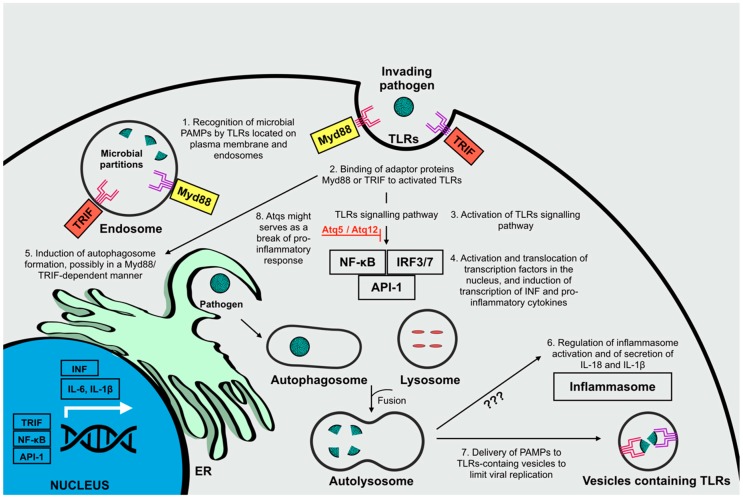Figure 3.
The role of autophagy in the regulation of inflammatory responses against invading pathogens. Microbial pathogen-associated molecular patterns (PAMPs) are recognized by toll-like receptors (TLRs) located on the plasma membrane or in endosomal compartments (1). The recognition of activated TLRs by adaptor proteins Myd88 or TRIF (2), activates TLR signaling pathways (3), involved in the activation of transcription factors Nf-KB, IRF3/7, and API-1 that then translocate to the nucleus for the induction of INF and pro-inflammatory cytokines transcription (4). The promotion of autophagosome formation is induced in a Myd88- or TRIF-dependent manner (5), and leads to the regulation of inflammasome activation and secretion of pro-inflammatory cytokines, through mechanisms that remain not completely understood (6), and to the delivery of PAMPs to TLR-containing vesicles to limit viral replication (7). Besides promoting pro-inflammatory activities, autophagy also serves as an impediment on the magnitude of the host’s antiviral reaction. Indeed, autophagy-related proteins (Atg12 and Atg5) might serve as a break for the pro-inflammatory response induce by TLRs (8).

